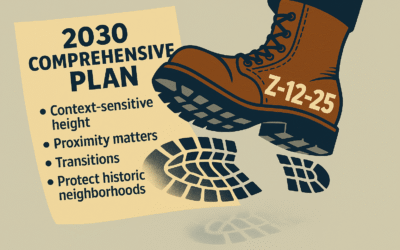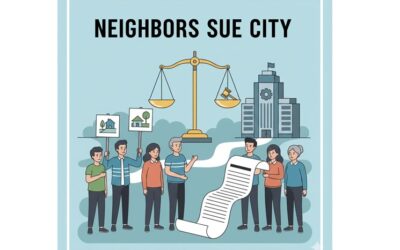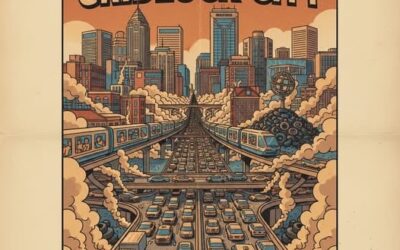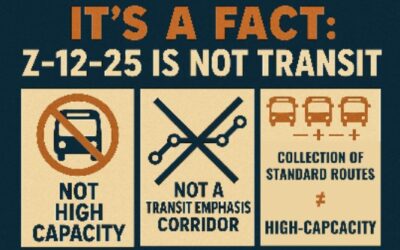At the October 7, 2025 public hearing at 7 PM there were a few comments made during the hearing on rezoning request Z-12-2025 to which I would like to respond, in addition to general comments on the overall procedure of the public hearing process.
Glenwood-Brooklyn Group Notifies City of Lawsuit
The Glenwood-Brooklyn neighborhood group has hired The Brough Law Firm, PLLC to challenge this rezoning case. The firm is investigating what we believe are several defects in how the City has handled the situation. The City has laws and policies that are designed to create gentle transitions from slow, quiet neighborhoods to the busy downtown area. We believe that the City has ignored basic principles and is overrepresenting developer interests. There is no precedent for this rezoning at all. You can’t find a single high-rise this close to a historic district ACROSS THE ENTIRE STATE.
Raleigh’s Christmas Parade – Let the Children Participate!
I plead for your assistance in preserving one of Raleigh’s greatest cultural events—the Raleigh Christmas Parade. Christmas and Christmas Parades are for CHILDREN. I sat next to Hailey Brooks’ father in 2022 as he pleaded that you not eliminate the parade following his daughter’s tragic death. I am here to ask you to reconsider the banning of participation by the under-8 set unless they are on a vehicle. By doing so, you have effectively closed the opportunity to many children who don’t have a ride.
LET THE CHILDREN participate.
The City is falling behind in infrastructure support
The City does have a plan to support that growth. It is called a Comprehensive Plan. Does the City follow that plan when adding density? Most times, the answer is no!
Been There, Done That!
The city has grown enormously in the past few years, as people from all over began to recognize it’s a great place to live. But this growth was accompanied by absolutely no planning – or bad planning – which means we are now living in a helter-skelter atmosphere akin to a Third World city in which anything goes. Along with this has come a lapdog attitude when it comes to the city council’s relationship with developers. Sound familiar? This commentary was written 5 years ago in 2019.
Z-12-25 West St Tower – Video – Bring Down the Height
The public hearing for this case will be held Tuesday, October 7 at 7pm. This public hearing will allow ONLY 8 minutes in TOTAL for those in opposition to present their case to City Council. Watch this video outlining the full fact and policy based opposition to Z-12-25. The 240’/360′ towers, in a transition area, 776′ along Historic Glenwood-Brooklyn Neighborhood only 190′ to 240′ feet from homes violates all plans, polices, urban planning guidelines and logic.
Why ask for public input only to ignore it?
I honestly have to ask – why seek public input if it’s not reflected in the analysis? Community engagement should serve as an opportunity to either mitigate community concerns or provide a transparent and respectful explanation when disagreement exists.
Z-12-25 does NOT meet Transit Land Use criteria
For a site to be designated as a Transit Land Use category, it must meet the definition “fronting along a corridor programmed for high-capacity, frequent bus transit.” The West St site meets ONLY the frequent transit criteria but fails the other two. It does not qualify for the Transit Land Use category.
Z-12-25 Stomps on Raleigh’s Comp Plan
Raleigh has the tools and the policies to manage growth responsibly. Z-12-25 ignores them. Approving this rezoning would not only damage a historic neighborhood but also set a precedent that threatens every neighborhood in Raleigh. The Comprehensive Plan shows us the path forward: moderate, context-sensitive growth that strengthens, not undermines, our city’s future.
Selective Policy Emphasis and a Disregard for Neighborhood Protections
Are we just counting which policies are convenient for a project and ignoring the ones that aren’t? This isn’t about stopping growth. It’s about rejecting a project that ignores codified transition areas, disregards protections for historic neighborhoods, and offers no real public benefit for on-site affordable housing.









